Spray foam guys stopped in today and insulated my storage tanks. These aren't the best pics in the world, but the area where the tanks are is kind of a scary dungeon anyways. I have been doing some testing with the boiler over the summer... letting it idle quite a bit while I make domestic hot water to see how much that effects the stack temps... so the heat exchanger is definitely in need of a good cleaning.
Cheers
Cheers


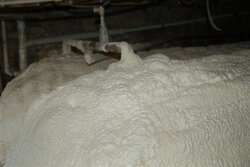
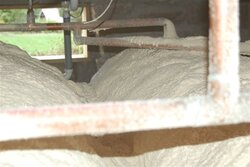
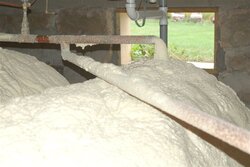
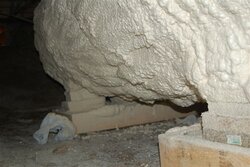
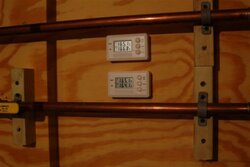
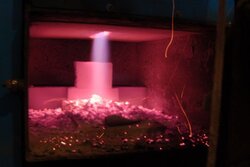
 !
!